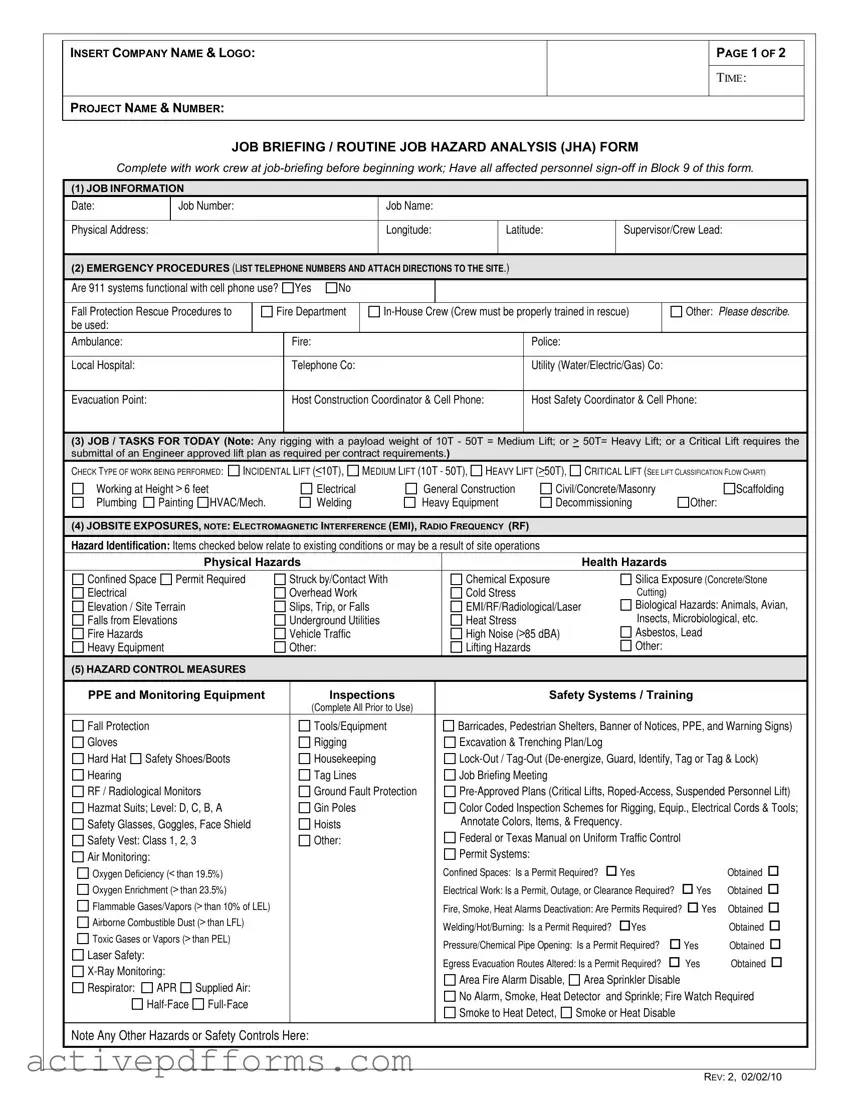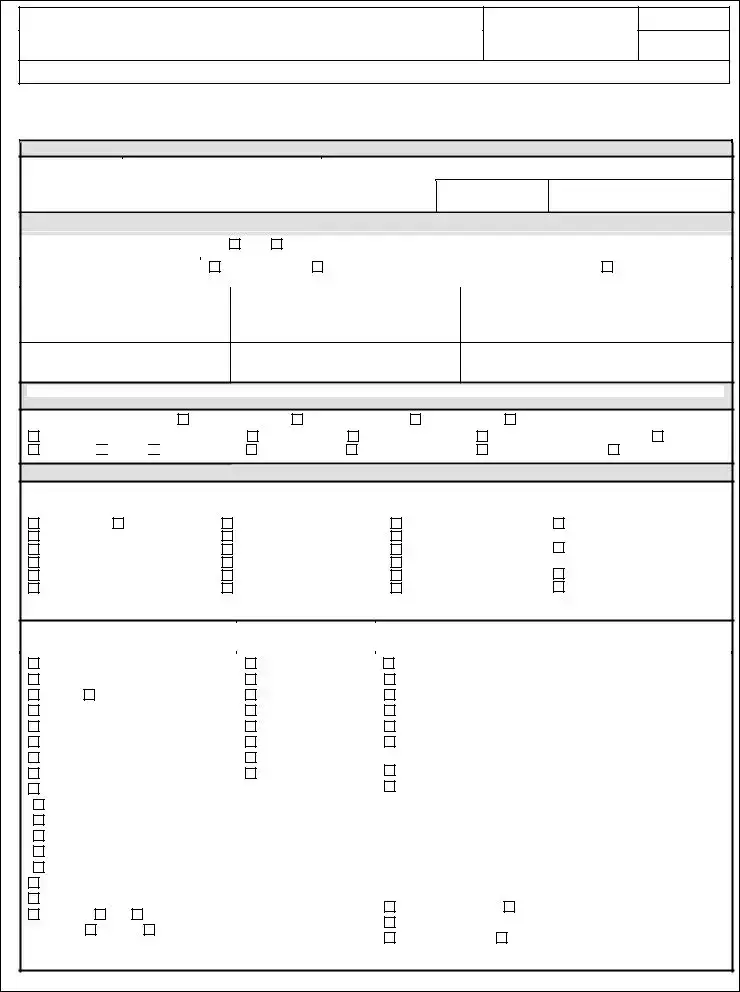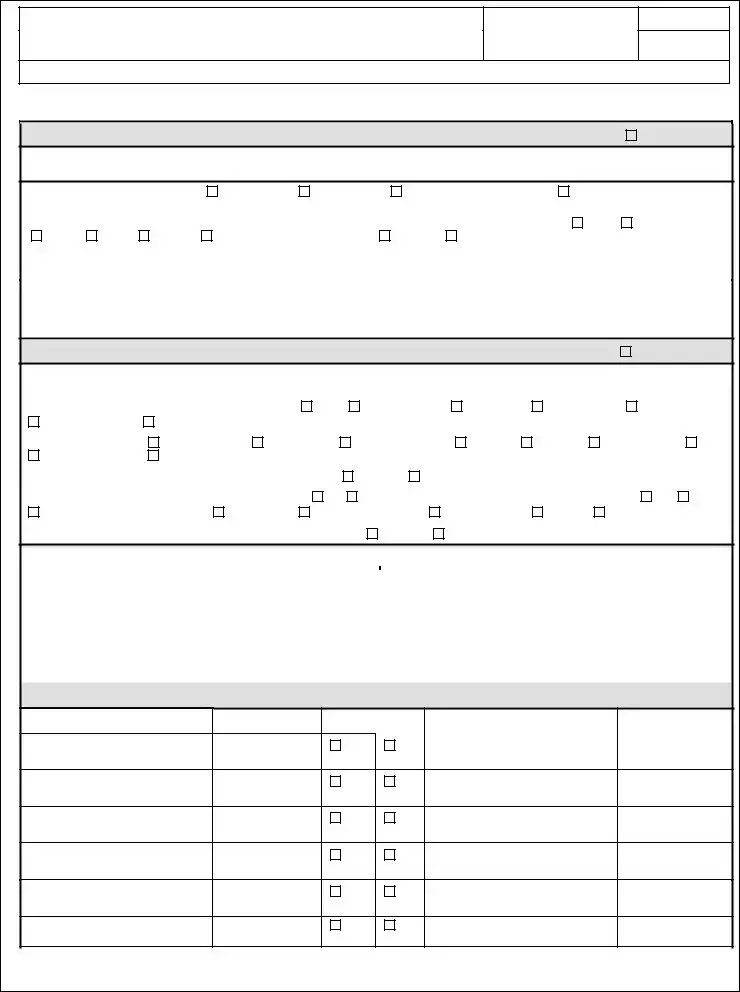What is the purpose of the Job Briefing / Routine Job Hazard Analysis (JHA) Form?
The Job Briefing / Routine Job Hazard Analysis Form is designed to ensure that work crews have a clear understanding of their tasks, the associated hazards, and the control measures in place prior to beginning their work. It facilitates communication about emergency procedures, job tasks, exposure to jobsite hazards, hazard control measures, and specific considerations for civil work and fall protection. This preemptive discussion aims to enhance safety and compliance on the job site.
How should the form be completed?
Before starting work, the form should be completed in collaboration with the entire work crew during the job briefing. It requires detailed information regarding job specifics, emergency contacts, the day’s tasks, potential hazards, planned safety measures, and any additional precautions needed for specific work conditions. Following the discussion, all affected personnel must sign off in Block 9 to acknowledge their understanding and acceptance of the job’s requirements and hazards.
What are emergency procedures on this form?
Emergency procedures include listing vital telephone numbers and attaching directions to the site to ensure quick access to emergency services such as ambulance, fire, and police. The form also queries the functionality of 911 systems with cell phones and outlines the fall protection rescue procedures, indicating the responsibility of either an in-house crew or external services and the necessity of proper training for those involved in rescue operations.
What does checking the type of work being performed entail?
By marking the relevant categories of work being performed, such as welding, electrical, or general construction, the form helps identify specific tasks for the day. This section also includes classifications for lifting operations and requires further documentation if engaging in complex lifting activities, highlighting the need for additional safety considerations and planning.
How are jobsite exposures identified?
Jobsite exposures are identified by checking applicable items from a list that considers both physical and health hazards ranging from high noise levels and vehicle traffic to chemical exposure and confined space risks. This critical assessment helps in emphasizing the specific risks present at the jobsite, ensuring that appropriate measures can be put in place to mitigate these hazards.
How should hazard control measures be documented?
Hazard control measures encompass a variety of safety precautions, including personal protective equipment (PPE) required, tools and equipment inspections, and specific safety systems or training needed. Documenting these measures, including fall protection or lock-out/tag-out procedures, is essential for ensuring all safety protocols are in place and understood by the crew before beginning work.
What specific information is required for civil work?
For civil work exceeding 5 feet in depth or involving confined spaces, the form requires detailed descriptions of excavations, environmental concerns, vehicle access, and potential electrical or gas hazards. This section emphasizes the importance of obtaining proper permits and following engineer-approved plans to ensure safety during high-risk activities.
What considerations are there for fall protection?
This section outlines the fall protection systems to be used, specifying the type of elevated work and the equipment required, such as full body harnesses, lanyards, and anchorage points. It ensures that each employee has inspected their fall protection equipment and that any encroachment of power lines has been addressed to prevent accidents.
Who needs to review and sign the form?
Upon completion of the job briefing and hazard analysis, the form must be reviewed and signed by the General Contractor (GC) Superintendent/Foreman and lower-tier subcontractor supervisor, acknowledging their review and understanding. Finally, all project personnel affected by the briefing must sign the form, indicating their acknowledgment of the hazards present and the safety measures outlined.



 Painting
Painting 
 HVAC/Mech.
HVAC/Mech.